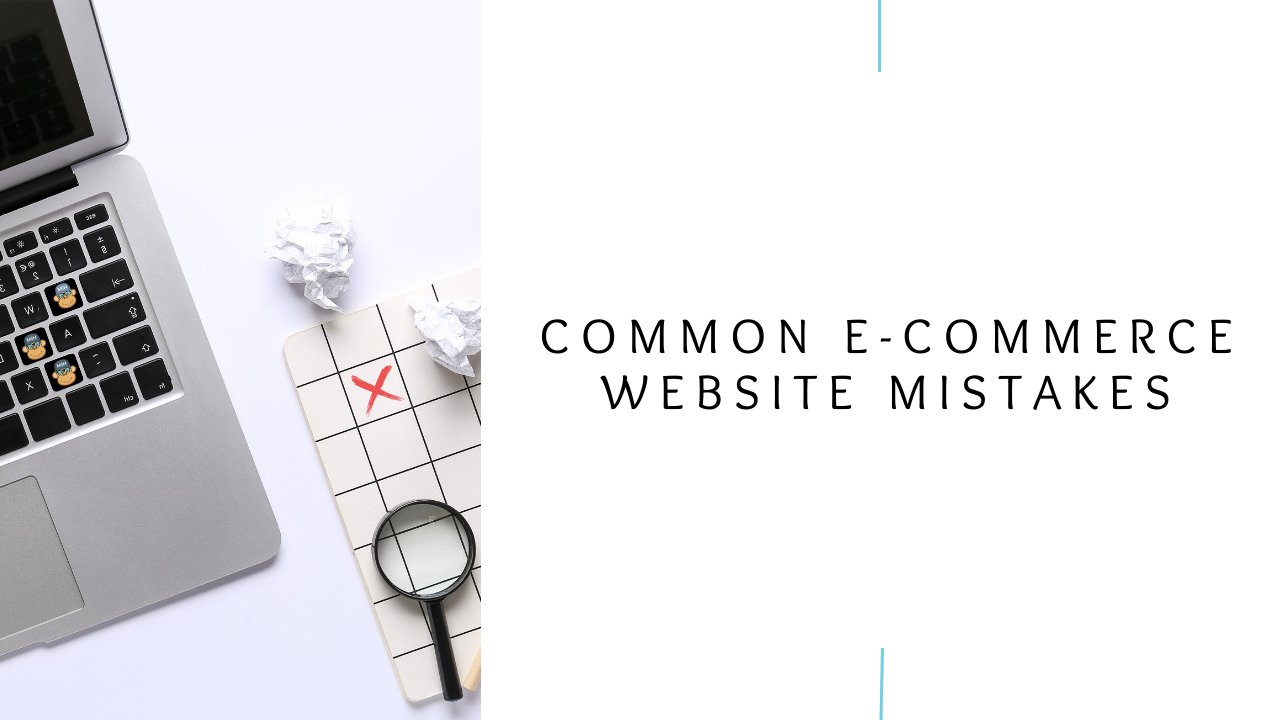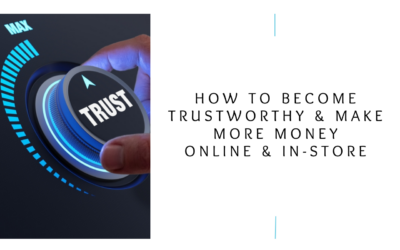
Ever felt like your e-commerce store is missing the mark, but you just can’t put your finger on it? Well, don’t worry! Today, let’s take a closer look at some common pitfalls that might be holding your website back from reaching its full potential.
-
Lack of Keyword-Loaded Articles & Content
You know that feeling when you search for something online, and your store is nowhere to be found? Your content is missing those magic keywords. If you’re selling luxury pieces, make sure your articles mention keywords like “use designer handbags” or “used authentic designer handbags” to attract the right audience. For furniture great keywords include “used designer furniture” and “consignment home decor”. Crafting engaging blog posts around your categories and top brands improves your SEO and establishes your expertise in your niche. For example, articles and blog posts that talk about how to authenticate Louis Vuitton, or share the creativity behind Kate Spade handbags. As well as how to clean leather sofas, how to remove water marks from wood tables, and how to clean a Louis Vuitton Neverfull in the washing machine.

-
Broken Back-Links to Products on Shopify
Nobody likes to click a link and end up at a dead end. That dreadful “404 Error” code is a surefire to get more clicks off your website than around it. As a resale store, with one item of everything, always backlink to the entire collection to always keep those links alive. A seamless browsing experience ensures customers can effortlessly explore your offerings and find what they’re looking for.

-
Inaccurate Product Titles
Don’t skimp on product titles. While we want customers to click around on your website, there is a limit to how many clicks it takes for a customer to get annoyed and click off. There’s a Shopify statistic that measures the amount of time a customer spends on your site. You want that time to be quality time, clicking through lots of different products, categories, and pages on your site, not frustratingly clicking, and clicking again to all the information needed to make a buying decision.
Don’t think that by not putting the size, the color, or leaving off some other information in the title is your strategy to get more clicks on your site and increase the amount of time someone spends on your site. Lots of clicks to get information are annoying and shoppers will click off your site and never return.
Also, product titles are how random people find your items when they’re searching Google. Don’t use abbreviations, shoppers don’t use them when searching. Google doesn’t know the difference between MD which also stands for Medical Doctor or, it’s the abbreviation that your in-take person uses for the word Medium. But another store’s in-take person might just use M or they might say Med which can also stand for Master of Education and is also short for Medical and a host of other words. Type out the words!
Thankfully Google has given us the exact directions on how to write the most effective product title. Do not stray from this. This is directly from Google. Don’t short-cut this successful action!
Brand + Gender + Product Type + Attributes
Nike, Men’s Running Shoe Black & White Size 11
Louis Vuitton Neverfull, Damier Azur, Monogrammed, MM
Chanel Double Flap Caviar Quilted MediumFor Furniture, let’s say you’re listing a sofa by the Brand Burrow and has the style name The Nomad Sofa and the color Charcoal:
Burrow The Nomad Sofa Charcoal 85X35X33.
List the size of the furniture.
Here is an example of Children’s Clothing:
Cat & Jack Girls Size 18 Months Black & Red Checkered Dress Children
Why do we put Children at the end? Because it’s a huge keyword that is searched for, so you want that in your title.

-
Poor Photography
A picture is worth a thousand words, and in E-commerce it’s worth thousands of dollars. Invest in top-notch photography, especially for high-end items like luxury handbags, jewelry, shoes, and clothing. Remove distracting backgrounds, showcase different angles, and because it’s used, show any scuff marks or scratches. Customers want to know exactly what they’re getting. It’s very disappointing to be anxiously awaiting your new item that you got at a great price only to have it arrive and find it’s missing a belt or has a stain. I have experienced this so many times and I’m not a return kind of person, not to a consignment store especially but, it decreases the trust factor in both shopping with that store again as well as consignment altogether.
With iPhones and Androids as sophisticated as they are with their fancy camera lenses now and editing features, you don’t even need to invest in a high-end camera, just a good background and good lighting.
Let’s talk backgrounds for a minute. Remove them. At first, yes it will take a few extra minutes but as with anything you’ll find your rhythm and your system and get really good and fast at it. Your website looks clean and your items show up better. There is so much more competition out there online for resale so you have to keep up at least if not stay ahead. Try to as closely mimic your biggest competitors as much as possible.
If you look at Fashionfile.com you will see that every item is photographed in the exact same way. It has exactly the same position in the frame. Every item. The same with The Real Real. They have a successful formula. Follow it as closely as you can.

-
No Return Policy or a Not Very Customer Friendly Return Policy
Customers absolutely need to feel confident in their purchases which includes if they get their purchased home, and it doesn’t fit – whether it’s clothing or furniture – they have the option to return it. A robust return policy is a testament to your commitment to customer satisfaction, assuring shoppers that their purchase is risk-free. Also, sometimes in-take misses a snag or a stain and it reaches a customer.
Customers want to know that if for any reason they are not happy with their purchases they can send them back. We are asking them to purchase items based on our photos and our description of the items. Imagine if you have not the best photos and not the best descriptions, coupled with a not-very-friendly return policy. Eek. That’s not a recipe for building long-term relationships with your online shoppers
Whether it’s a sizing snafu or a change of heart, empower your customers with the confidence to hit that “Buy Now” button without hesitation.
-
Social Media Links Overload
Ah, social media—the double-edged sword of digital marketing. On one hand, it’s a powerful tool for building brand awareness and engaging with your audience. On the other hand, it’s a slippery slope of distractions and detours. Bombarding visitors with links to Facebook, Instagram, TikTok, and YouTube can be overwhelming.
Pick one link per platform – maybe showcase your latest Instagram posts directly on your site. It keeps things fresh without stealing the spotlight from your products. Integrating social media feeds or sharing customer testimonials can foster trust and engagement while keeping visitors on your site longer.
You worked really hard to get your customers to your website. You spent marketing dollars to get people to your website. Keep them there, don’t send them off your site. Don’t be a backlink for Mark Zuckerburg.
-
Allowing External Ads
Your website is your digital sanctuary, a sacred space reserved for showcasing your brand and products in all their glory. So why clutter it with external ads that detract from the user experience?
Reject external ads to maintain a clean, distraction-free environment. Your customers came for your brand – let’s keep the focus on that. Instead, leverage strategic partnerships or affiliate marketing programs that align with your brand values and enhance the customer experience.
If you’re a blogger who gets paid based on affiliate links, referral fees, and ad clicks, then yes external ads are a good financial strategy. But most resale small businesses work hard to drive traffic to their websites so keep people where you want them… on your site.

-
Redirecting Traffic to Other Blogs
Sharing is caring, but keep your audience captivated with your own content. Instead of sending them off to external blogs with outbound links, create engaging content right on your website. We’ve already talked about the huge SEO benefits of blog posts on your website. Use storytelling and multimedia elements to educate, inspire, and connect with your audience while reinforcing your brand identity and values. For examples of this, you can visit MonkeysInHats.com and view our Blog and Resource Library. We post content along with each short video blog and then we publish the entire write-up in the Resource Library.
-
Widgets and Plugins Overload
Ah, widgets—the unsung heroes of website functionality. From chatbots to pop-up forms, these nifty little tools have the power to streamline the user experience and drive conversions. But beware: too many widgets can quickly turn your website into a cluttered mess. They can slow down your site considerably as well. Choose them wisely. If they’re not contributing to your business goals, they might be sending you backward. Kind of like having one foot on the accelerator and one foot on the gas at the same time. Customers can get too distracted by “all the things” and it can make the shopping experience more confusing and distracting instead of driving more sales.
Focus on what counts such as converting traffic into email subscribers and keeping your visitors engaged on YOUR website longer. Regularly audit and streamline your website’s functionality to ensure a seamless user experience that drives conversions and fosters customer loyalty.

Armed with these insights, refine your online shop into seamless, customer-friendly experiences. Remember, Rome wasn’t built in a day, and neither is a successful e-commerce empire. Take it one step at a time, and always keep your customers at the heart of everything you do. Take this list and turn it into a checklist. Be intentional about your time spent on fixing each of these mistakes if you have any of them. For example, take the time to write up the instructions for your in-take team on how to write consistent Product Titles. No matter who is working in-take everyone is doing the product titles the same way.
Create a system for your photography. If you have a system in place, then all photos will look the same no matter who is taking the photos. Systems are also helpful because if someone quits you can put anyone into that position, and they will still have the same consistency because you have a system in place.
When I owned my online business, I wrote up all the directions for exactly how to ship my items. Every step. That way I could go on vacation and my neighbors could come in and ship my products. The only way they could mess up was if they skipped a step. So, I laminated my steps, and they could check them off as they shipped and then wipe them off for the next order.
You are so close to E-commerce success. Probably a lot closer than you think. Just keep going. Don’t give up. Selling online is pure joy and happiness when you do it right!
Interested in the condensed video version? Click here.
For the complete training video, tap here. Note: To access, you must join the Consignment Marketing FB Group.
Read More:
How to Become Trustworthy & Make More Money Online & In-store
Let's talk about something super important in the resale industry—trust. Like the stuffing in an Oreo cookie, it’s what holds everything together. People need to trust you when they're buying pre-loved stuff. Understanding the Importance of Trust Trust...
Cross Listing Like a Boss
What is Cross Listing? In simple terms, cross listing is the practice of listing a single item on multiple selling platforms simultaneously. Think of it as casting a wider net in the vast ocean of e-commerce. By doing so, you increase the visibility of your...
How to Finally Win with your Website or Achieve Any Goal That’s Been Un-Achieved For Too Long!
“I don’t think I’ve been setting realistic goals in trying to build my online business.” “I feel very stuck because I have this big vision, I know I have to start step by step but I start to get into it and then something happens and I fall back.“ “I have a...



